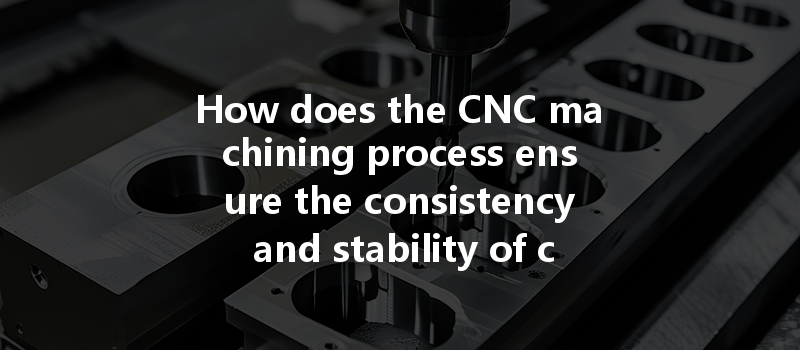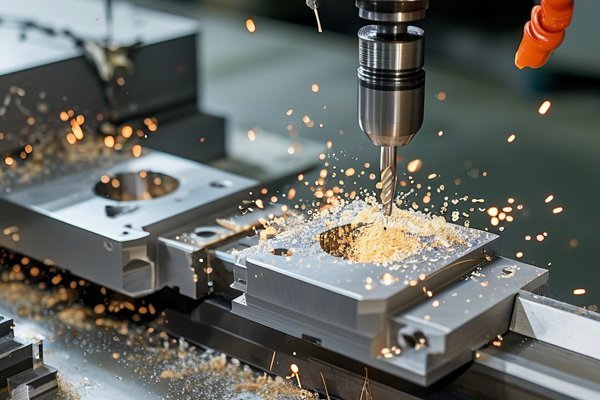: A Precision-Focused Approach
Did you know that precision machining can achieve tolerances as tight as ±0.0001 inches? This astounding level of accuracy is one of the remarkable capabilities of CNC (Computer Numerical Control) machining, a technology that has revolutionized manufacturing. Consistency and stability in the production of custom parts are not merely desirable traits; they are essential for industries ranging from aerospace to medical devices. If you’ve ever wondered how companies manage to produce identical components with such exceptional precision, you’re in the right place.
In this comprehensive blog, we will explore the techniques, processes, and methodologies involved in ensuring consistency and stability in custom parts through CNC machining. Whether you’re a seasoned engineer or a manufacturing enthusiast, understanding these principles can drastically improve quality control and overall productivity in any CNC machining project.
Chapter 1: Understanding CNC Machining
1.1 What is CNC Machining?
CNC machining is a manufacturing process that utilizes computer programs and pre-determined codes to control machining tools such as drills, lathes, routers, and mills. By automating movements with high accuracy, CNC machining enhances productivity while reducing human error, making it a popular choice for creating complex parts and components in various industries.
1.2 The Importance of Consistency and Stability
In order to maintain high-quality production, it is crucial to emphasize two primary factors: consistency and stability. Consistency refers to the ability to produce components that are nearly identical over multiple production runs, while stability involves maintaining the integrity and quality of those components throughout the manufacturing process.
Chapter 2: Key Principles for Ensuring Consistency and Stability
2.1 Rigorous Material Selection
Materials play a significant role in the consistency and stability of finished parts. Choosing the right material—whether it be aluminum, steel, plastic, or any specialized alloy—is essential. Each material has its own properties, including hardness, thermal stability, and machinability. Implementing a thorough material selection process ensures that the final product meets the intended requirements.
Tips for Material Selection:
2.2 Precision in Tooling
The quality and maintenance of machining tools directly impact the machining process. Dull or incorrectly configured tools can produce variations in tolerances, leading to inconsistent parts. Additionally, using the right tooling geometry can reduce machining forces and vibrations, thus enhancing output quality.
Recommendations for Tooling:
2.3 Cutting Parameters Optimization
Choosing the proper cutting parameters—including feed rate, spindle speed, and depth of cut—is vital to achieving consistent results. These parameters should be adjusted for each material type, factoring in tool wear and machine capabilities. Utilizing an automated system for real-time monitoring can help maintain optimal conditions.
Best Practices for Cutting Parameter Adjustment:
Chapter 3: Process Controls and Monitoring
3.1 Implementing Quality Control Protocols
Quality control (QC) is a systematic method for ensuring that manufactured products meet specified requirements. In CNC machining, QC procedures can include statistical process control (SPC), inspection during production, and post-production auditing. Utilizing automated inspection systems, such as machine vision or coordinate-measuring machines (CMM), can identify defects and variations early in the process.
Key QC Techniques:
3.2 The Role of Calibration

Calibrating CNC machines and measuring instruments periodically ensures that they maintain the required level of precision. Regular calibration prevents drift in machine performance and helps maintain consistent output quality.
Calibration Steps:
Chapter 4: Advanced Techniques for Consistent Handling
4.1 Fixture Design
Proper fixture design is crucial for maintaining workpiece stability during machining. Fixtures should secure the part without movement and accommodate machine tolerances. An effective fixture will not only reduce cycle time but also improve the overall consistency of the parts produced.
Design Tips for Fixtures:
4.2 Process Automation
Automation in CNC machining reduces human involvement, which minimizes variations caused by operator error. Automated loading, unloading, and tool changing systems allow for continuous production while ensuring that parts adhere closely to specifications.
Benefits of Automation:
Chapter 5: Post-Processing Considerations
5.1 Surface Treatments
The application of post-processing surface treatments can enhance the function and durability of parts. Techniques such as anodizing, plating, and coating need to be performed under controlled conditions to ensure consistency.
Post-Processing Best Practices:
5.2 Final Inspection
Post-production inspection is critical for assessing the consistency of parts. Inspecting both dimensional tolerances and surface quality can identify any variations caused during machining or post-processing.
Inspection Techniques:
: The Significance of Consistency and Stability in CNC Machining
In conclusion, achieving consistency and stability in custom parts manufacturing through CNC machining requires a multi-faceted approach. By thoughtfully selecting materials, optimizing tooling and cutting parameters, implementing rigorous quality control measures, leveraging process automation, and ensuring effective post-processing, manufacturers can create high-quality components that meet strict industry standards.
This blog highlights the importance of investing time and resources into the intricacies of CNC machining. Understanding the elements that contribute to consistent and stable production is crucial for any company aiming to thrive in an increasingly competitive market. Embracing these techniques not only improves the quality of products but also enhances customer satisfaction and loyalty.
As you explore the sophisticated world of CNC machining, remember that every detail matters. Consistency and stability are not just technical terms; they represent a commitment to excellence in manufacturing. Whether you are just starting or are looking to refine your existing processes, the techniques discussed in this blog are worth considering to ensure that your custom parts are produced to the highest quality standards.






